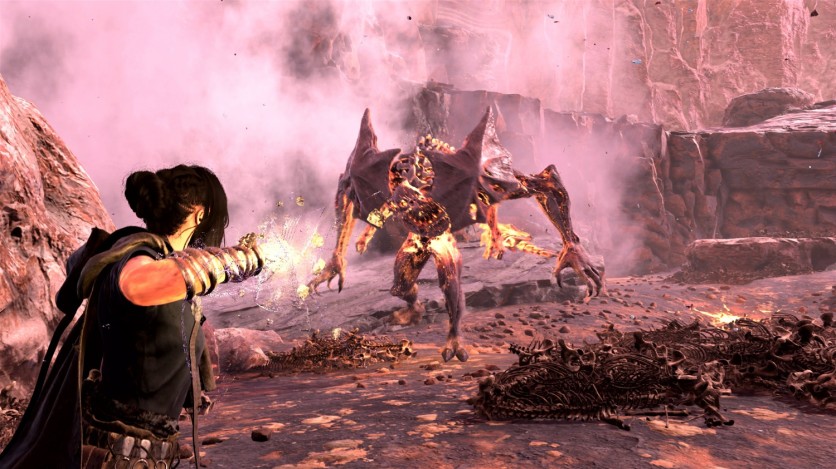"Forspoken" is shaping up to be the perfect tech demonstration of Microsoft's new DirectStorage feature in a real-world gaming setting.

The upcoming PS5 (timed) and Windows-exclusive game (Xbox consoles will get it by 2024) has been shown using DirectStorage for blistering 1-second load times. That is if your PC's hardware is to snuff, at least, writes GamesRadar. And since DirectStorage is a Microsoft property, it won't be on Sony's console (sorry, PS5 owners).
Here is a video of the "Forspoken" tech demo running DirectStorage. As you can see, loading times for the upcoming action-adventure game are practically nonexistent on PC. Check from the 1:55 mark:
A 1.7 to 1.9-second loading screen is absolutely insane, which is achievable by pairing an M.2 NVMe SSD with DirectStorage. A SATA SSD can only load up in 3.7 seconds (still pretty dang fast), while a mechanical HDD can load things up in 21.5 seconds (again still blazing fast compared to normal circumstances).
In short, this massive open-world game can load assets up faster than you can "hamburger."
Not to mention, "Forspoken" will also be featuring AMD's FidelityFX Super Resolution (FSR) on both PC and the PS5 (which if you weren't aware is using AMD hardware). But for some reason, it will only use the first generation version of FSR and not the newly announced FSR 2.0.
"Forspoken" follows the adventures of main character Frey, a young woman from New York City who gets transported into a mythical land. She must then escape this world with her newfound magical powers, while also battling monstrous creatures along her path (via SquareEnix). It is scheduled to release on October 11th.
Read Also : Microsoft Windows Brings DirectStorage API, Focusing on Faster Loading Times for Games, and MORE
How DirectStorage Works Wonders For 'Forspoken'--As Well As Other Future Games
Microsoft designed DirectStorage with the express purpose of helping games load faster than ever before. According to MakeUseOf, it basically works by eliminating so-called performance bottlenecks, most of them involving the CPU.
Games get loaded up from a storage drive in a sequence. Here's the flow:
Launching a game will make it draw data from the storage using an API (application programming interfaces)
After going through the API, the game data is compressed, then taken from your storage drive and stored in RAM
From the RAM, the data goes to the CPU to be decompressed
The CPU sends the decompressed data to your graphics card VRAM
The data from the VRAM is then used to render the game on your screen
DirectStorage makes this process faster by eliminating the need for the CPU to decompress the files. Another change is the super-fast NVMe storage drive, which is required for the feature to work.

The process of loading the game up remains the same. But DirectStorage introduces its own file decompression techniques focused on using the GPU, in order to take away much of the work from the CPU as decompression takes a long time. The NVMe drive helps out even more because of its sky-high bandwidth, which is measured in GB/s rather than MB/s.
In the future, more developers can bake DirectStorage directly into their games to enable this-basically kissing load times goodbye.
This article is owned by Tech Times
Written by RJ Pierce
ⓒ 2025 TECHTIMES.com All rights reserved. Do not reproduce without permission.




